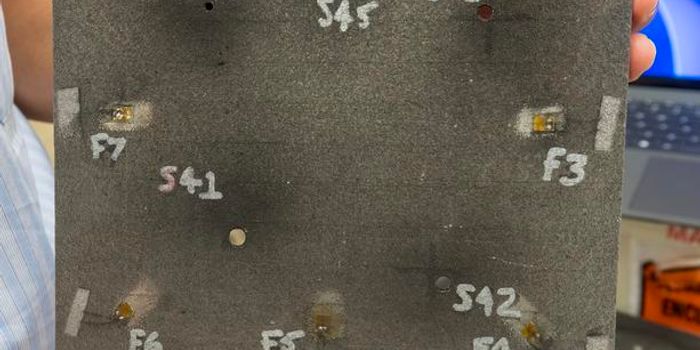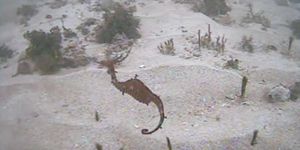A Mission to Find Out if Life Exists on Venus
It has long been postulated that the dark, thick striations in Venus’ atmosphere could have been caused by the presence of microbial life. While there’s no solid evidence yet, scientists want some answers, and according to an entry in Astrobiology Magazine, we may soon get some.
Image Credit: Northrop Grumman
Roscosmos and NASA are reportedly being asked to launch a joint mission, as soon as 2025, to send a special kind of atmospheric probe to Venus by way of an orbiter, whether a balloon or some kind of glider, which can grab samples and conduct atmospheric studies while in Venus’ thick, cloudy, and acidic atmosphere.
The craft would need to be buoyant enough to float in the dense cloudy atmosphere of Venus, so it would have to be filled with a light gas, such as helium or hydrogen. It would also need to be maneuverable with some kind of electric propeller system so it could navigate to the desired locations of Venus’ atmosphere. Such a mission could be named Venera D, and might uncover some answers we’ve been looking for.
Those strange striations in the Venusian atmosphere are said to be odd, because unlike ordinary dark marks in many planetary atmospheres, they don’t ever seem to mix together with the rest of the surrounding atmosphere. What’s more is they’ve been hypothesized to absorb radiation, a trait that can often be attributed to certain microbes.
Of course, the radiation-absorbing bit could be due to frozen ice crystals in Venus' atmosphere, but given its average temperature range, such theories seem unlikely.
Interestingly, Earth is known to have some microbes in its own atmosphere, so such a hypothesis probably isn’t far from the point. On the other hand, Venus is several times hotter than Earth is, having an average temperature of around 864º at its surface, it compares to Earth’s average temperature of around 57º Fahrenheit.
We can’t just assume the microbes are there, because we have no solid scientific evidence for it just yet, so that’s the primary goal of this project. Another goal of such a mission would be to better study the planet’s strange rotation patterns, as the atmosphere rotates much faster than the rocky surface below it.
“These are questions that haven’t been fully explored yet and I’m shouting as loud as I can saying that we need to explore them,” atmospheric scientist Sanjay Limaye from the University of Wisconsin, Madison said in a statement.
“I cannot say that there is microbial life in Venus’ clouds,” he continued. “But that doesn’t mean it’s not there either. The only way to learn is to go there and sample the atmosphere.”
The mission still has yet to achieve approval from governing bodies, and once it does, Roscosmos and NASA will then have to decide if they will work together on it or not, but scientists are understandably getting excited to sample Venus’ atmosphere and find out once and for all whether there are any traces of life anywhere else on our Solar System besides Earth.
While many wouldn’t be surprised to find microbial life forms on Venus, often considered to be one of Earth’s cousins in the Solar System, that’s not to say they’re actually there. Nevertheless, it should be interesting to see what can be found when the mission actually does take off.
Source: Astrobiology Magazine









